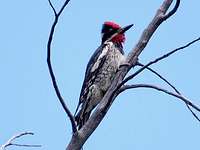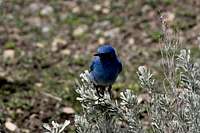-
 32701 Hits
32701 Hits
-
 88.73% Score
88.73% Score
-
 29 Votes
29 Votes
|
|
Area/Range |
|---|---|
|
|
42.98184°N / 116.65862°W |
|
|
Hiking, Aid Climbing, Canyoneering |
|
|
Spring, Summer, Fall, Winter |
|
|
Mountains
The 4 major peaks are in the area just south of Silver City:
- Hayden Peak - the tallest in the range
- War Eagle Mountain- the most used mountain in the region
- Quicksilver Mountain- triple summitted and the most remote of the major peaks
- Turntable Mountain- situated between War Eagle and Hayden
Overview
- The name Owyhee comes from Captain Cook's name for the Hawaiian Islands. The name was attached to this area after several Hawaiian trappers in the region vanished in 1818.
- Exploitation has been ever present in the region from the 1860's until now. The world's largest open pit silver mine is active and thriving in this area- De Lamar
- The historic mining town of Silver City was the largest settlement in the region. In the 1860's silver was discovered on the nearby mountains and the area has never been the same since. Like many of the boom and bust towns, Silver City sprung up very quickly. At the time, War Eagle Mountain mines had richer ores and larger initial production than any other mining area in the world. The area produced over 60 million dollars worth of ore and boasted a population of 2500 residents. Today, Silver City and the War Eagle Mountain area is home to a few summer time residents, and usually none in the winter.
- Most of the region is managed by the BLM, so virtually anything goes here- off road vehicles, hunting, mining, heavy cattle grazing.
- The War Eagle Mountain area has been the site of many bloody battles and deaths. Along with the documented Stage Coach robberies and murders in the region, there was at least one major uprising amongst miners against management in the late 1800's. The workers were fed up with conditions and payment terms and shot and killed several supervisors. During the Bannock Indian uprising, the U.S. Calvary was called down from Boise and slaughtered a portion of a group of natives near South Mountain. The Indians had also ambushed and killed settlers and travelers along the nearby roads.
- The Owyhee uplands are part of the Basin and Range region.. The mountain range runs north to southeast separated by broad basins. Geologically the Owyhees extend southeast into Nevada and the Ruby Mountain region.
- The lower slopes of War Eagle Mountain contain some of the most impressive rock outcroppings in all of southwestern Idaho. The rock is mostly granite with a patina covering. Agates, Petrified Wood, Garnets, and Crystals are commonly found in the canyon portion of the region.
- The Swan Falls Dam on the Snake River was built exclusively to generate power for Silver City. The dam still remains and is a short drive from Boise,ID. Summertime visitors to Silver City will notice that the electricity in the historic buildings is all 12 volt based and dim. This makes for an appropriate atmosphere if you stay overnight in the old hotel.
- Silver City remains one of the best living ghost towns to visit in the U.S.- isolated, rugged, and no commercialization.
Getting There
External Links
Silver City Photos and History
Idaho Conservation League Owyhee Info
Owyhee Canyonlands
Ghost Town Information on Silver City
Silver City History, Pictures and Family Information









brendon - Mar 10, 2006 4:57 am - Hasn't voted
GeologyI just read that the basement geology of the Owyhees was part of the Idaho Batholith and was seperated by Basin and Range faulting, as well as covered in volcanic rock from the Yellowstone Hotspot (see the Snake River Plain page.)